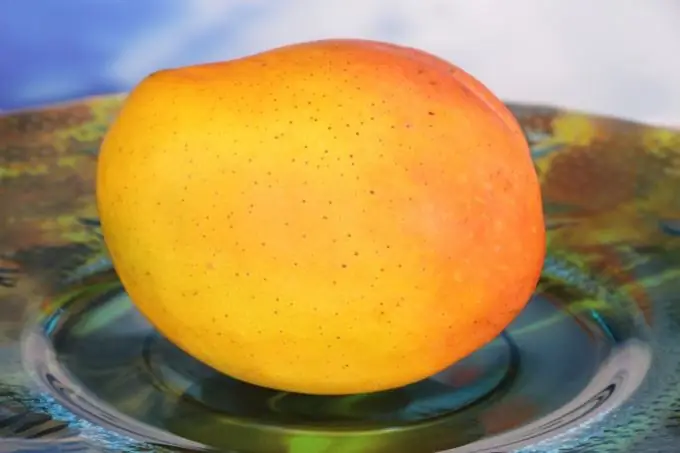Mango is an exotic fruit, but quite popular in our country. Many gardeners and indoor plant lovers would love to grow its juicy and aromatic fruits. Although the homeland of mangoes is the tropics, it is quite possible to grow mangoes in our strip, just not in the garden, but at home. Of course, for this it is necessary to create suitable conditions for him

First of all, it is necessary to provide him with a well-lit, warm and sunny place. The pot in which the mango will be planted must be large enough, as the mango has a highly developed root system
The soil for the mango must be well drained, in no case should it be allowed to dry out. After flowering, when the fruits begin to ripen, watering is significantly reduced so that the leaves of the tree do not droop. The air should be sufficiently humid, but special humidification and spraying of the mango is not required.
In the spring of the mango, it is necessary to prune the crown for its correct formation. During growth (spring, summer), mangoes are fed with mineral fertilizers, but they are stopped in autumn. Mango can be grown both from a seed and from a seedling - by grafting. The latter method is more preferable, as it allows you to see the planned result - the color, variety and taste of future fruits. Seedlings are grown from the seeds, which are used for grafting. Mango trees begin to bear fruit 1-2 years after vaccination. The first years of mangoes should not be allowed to bear fruit, for which purpose flower panicles are removed from the tree. However, if the tassels are removed too early, the mango can bloom again, and more than once. Therefore, flower panicles are removed after the first flowers are decorated.
When the tree has a strong enough crown, you can allow it to bear fruit. However, in the first year, very few fruits should be left, only in this case they will be large enough and edible.
If you still want to try to grow a mango from a seed, peel it from the shell and place it in sphagnum for germination. It is necessary to maintain a high temperature in the place of germination - at least twenty-two degrees. The seeds germinate from two weeks to a month, after which they can be transplanted into a nutrient substrate and placed in a well-lit, warm place.
The seed-grown trees are capable of bearing fruit in six years. To speed up fruiting, you can plant seedlings in the second year. The vaccination is done at the end of summer. Immediately after grafting, the seedlings must be sheltered from the sun until the scion begins to grow.
The soil for mango seedlings should be slightly acidic, light and rich in nutrients.
As you can see, there is nothing difficult in growing mangoes at home.






